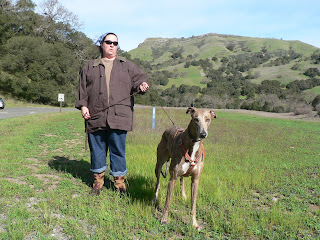
For the first couple of days, I left Rosanne in a short x-pen in the living room when I had the big dogs out. This way, they could get acquainted through and over the pen but she would not get squished. I also kept her on leash when outside so that she wouldn't run away and get mowed down. Tanner is a pretty laid back guy but when his chase instinct kicks in, all bets are off!

Eventually, they had interacted enough that I was confident that he would listen if she told him to back off. I let them play in my living room where she could get away if need be but there wasn't enough room for her to get the zoomies. I also kept reminding Tanner to lay down to play with her instead of squishing her. He did a great job! It helps that she was also able to stay under control. I do not like to let puppies get above threshold when they play!
I did not let Shine play with Tanner and Rosanne. You can hear her towards the end of this clip starting to whine from being left out. Don't worry, I was giving her treats for staying out of the way! In most cases, it is best to have even pairs of dogs or just two out at a time. It keeps them from ganging up on each other and allows them to modify their play for each other.
It is nice to have a dog that is small-dog savvy and able to interact appropriately with other dogs! I think Tanner and Rosanne will be life-long friends!

